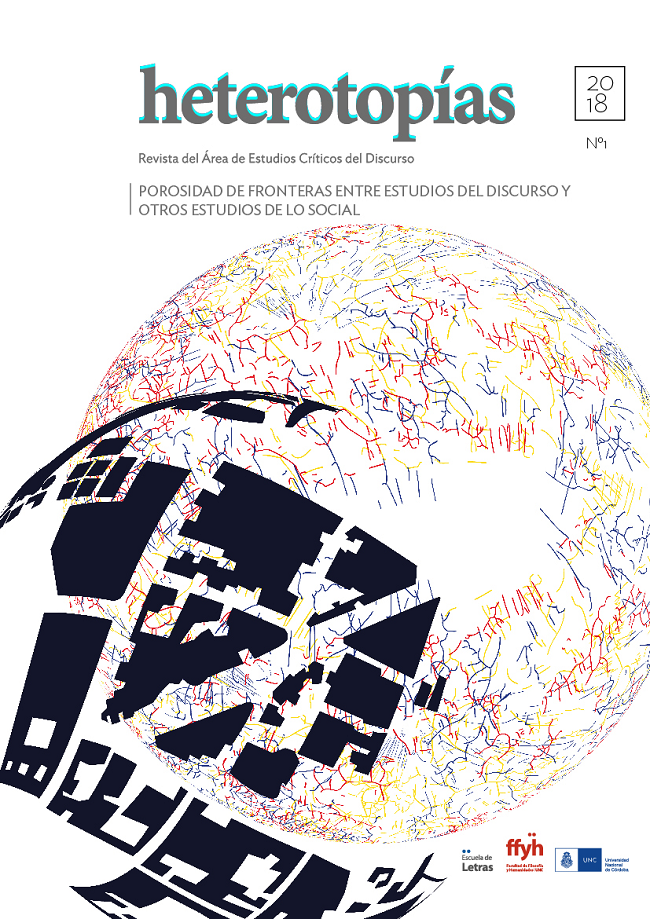lLos pueblos de ingenios como espacios heterotópicos: Narración y política
Main Article Content
Abstract
In Project 2076, "Art and literature in contemporary urban spaces", we looked into both the complexity of the constitution of cities and the diversity of forms they present. From rural villages to mega-cities, it is possible to trace a route that is not only quantitative, but also allows us to see multiple shades in the forms of appropriation of space, in the projects that constitute them and in the ways of symbolization that move around those spaces. On this occasion we will deal with a particular urban model, namely, the villages of sugar mills, where only the workers of such companies live, in a distribution of places that are equivalent to the labor ladder that they hold not only in terms of housing, but also in the distribution of public spaces. These communities are the result of the convergence of economic, social and production logics and are proposed on the basis of entry and closure requirements, where daily life is regulated by work schedules, and are constituted as a critical challenge to other work spaces. From this perspective, they can be considered as heterotopias, as far as they break the flow of human groupings and impose themselves as neutral or pure places (Foucault 2009), that is, counter-spaces that challenge other orders of community life. The ingenious villages put in relation multiple spaces, some of them incompatible with each other, and set out a temporary closure that takes them out of the historical becoming. In order to support the arguments around this hypothesis, we will review historical records and testimonies as well as literary figures, specifically, the novel The Sex of Sugar, by Eduardo Rozensvaig.
Downloads
Article Details
Those authors who have publications with this journal, accept the following terms: Those authors who have publications with this journal, accept the following terms:
a. The authors will keep their copyright and guarantee to the journal the right of first publication of their work, which will be simultaneously subject to the Creative Commons Attribution - Non-Commercial - Share Alike (by-nc-sa) Attribution License; no commercial use of the original work or any derivative works is allowed, the distribution of which must be done with a license equal to the one that regulates the original work.
b. Authors may adopt other non-exclusive license agreements for the distribution of the published version of the work (e.g., deposit it in an institutional telematic archive or publish it in a monographic volume) provided that the initial publication in this journal is indicated.
c. Authors are allowed and recommended to disseminate their work through the Internet (e.g. in institutional telematic archives or on their website) before and during the submission process, which may lead to interesting exchanges and increase the number of citations of the published work. (See The effect of open access).
How to Cite
References
DANTUR, Ana I. (2016). “Chimeneas”, Ponencia presentada en las Jornadas de Historia y Memoria, 1966: Tucumán y el cierre de los ingenios azucareros. Tucumán: UNT.
FOUCAULT, Michel. (1984). “De los espacios otros”, “Des espaces autres”. Conferencia dictada en el Cercle des études architecturals, 14 de marzo de 1967. Publicada en Architecture, Mouvement, Continuité, 5, octubre de 1984. Traducida por Pablo Blitstein y Tadeo Lima: http://textosenlinea.blogspot.com.ar/2008/05/michel-foucault-los-espacios-otros.html
GUZMÁN, Raquel. (2016). “El gesto del arte. Literatura y desocupación”, ponencia presentada en las Jornadas de Historia y Memoria, 1966: Tucumán y el cierre de los ingenios azucareros. Tucumán: UNT.
MERCADO, Lucía. (2008). El Gallo Negro. Vida, Pasión y muerte de un Ingenio Azucarero. Buenos Aires: Ed. LM.
MERCADO, Lucía. (2003). El Ingenio Santa Lucía de Tucumán. Los primeros habitantes. Buenos Aires: Ed. LM.
PUCCI, Roberto. (2007). Historia de la destrucción de una provincia. Tucumán 1966. Buenos Aires: Ediciones del Pago Chico.
QUIPILDOR, Fátima E. (2016) “Santa Lucía, pueblo de ingenio”. Ponencia presentada en las Jornadas de Historia y Memoria, 1966: Tucumán y el cierre de los ingenios azucareros. Tucumán: UNT.
ROMERO, José Luis. (2013). La ciudad occidental. Culturas urbanas en Europa y América. Buenos Aires: Siglo XXI.
SIGAL, Silvia. (1973). “Acción obrera en una situación de crisis: Tucumán 1966-1968”, Documento de Trabajo, Centro de Investigaciones Sociales, Instituto Torcuato Di Tella.
ROSENZVAIG, Eduardo. (1991). El sexo del azúcar. Buenos Aires: Letra Buena.
VON WOBESER, Gisella. (1988). La hacienda azucarera en la época colonial. México: UNAM.
